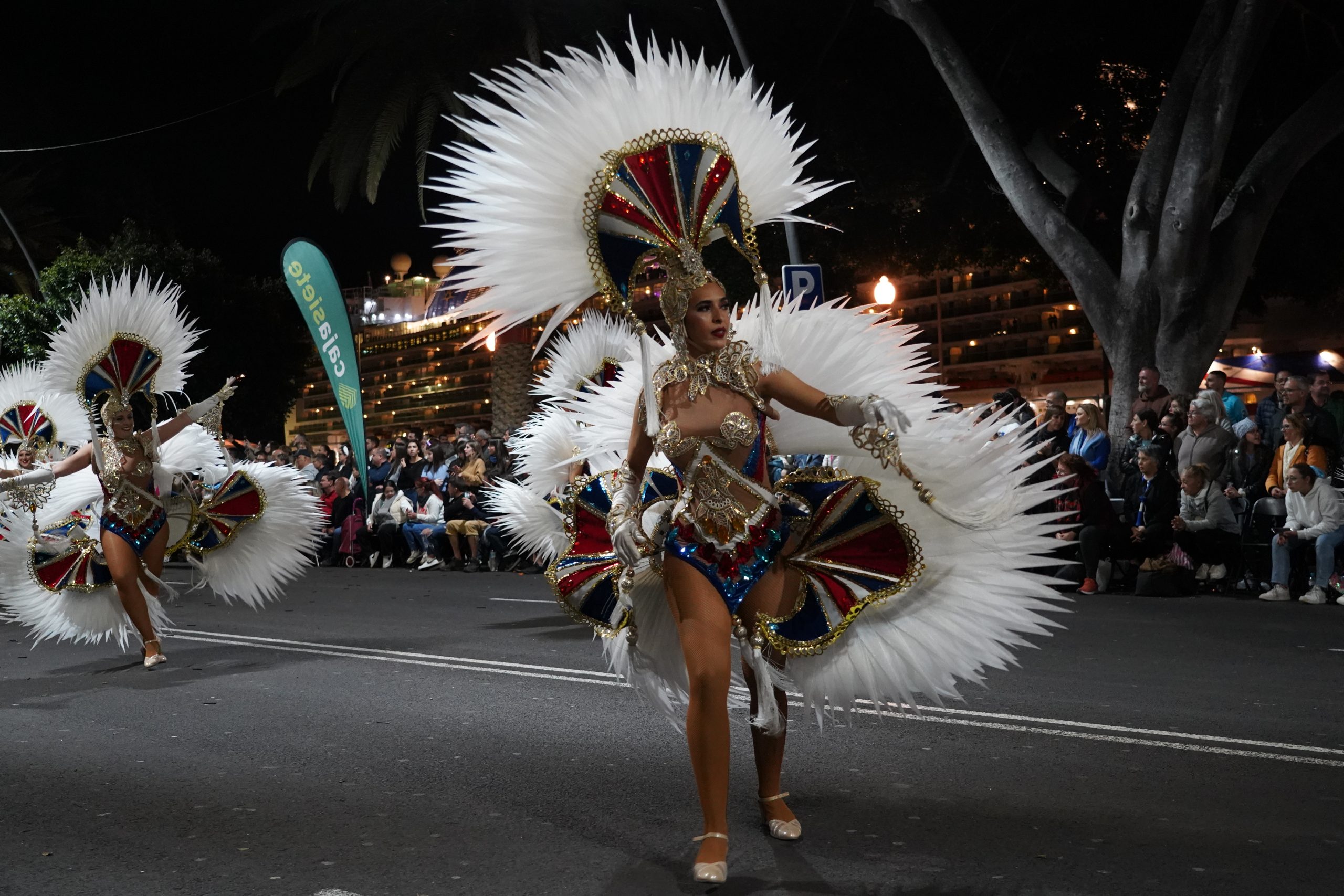Carnaval in Santa Cruz de Tenerife is one of the biggest and most vibrant carnival celebrations in the world. It takes place annually on the island of Tenerife, which is part of the Canary Islands, Spain. The Tenerife carnaval usually occurs in February or March, just before Lent, and it’s known for its colorful parades, elaborate costumes, lively music, and energetic street parties. It is a much different vibe than found at the Carnivals in Venice or Nice, France.
The Tenerife carnival is famous for its spectacular costumes and competitions, including the selection of the carnival queen and her court. The festivities often last for several weeks, with various events and activities taking place throughout the city. It’s a time when locals and visitors alike come together to enjoy the festive atmosphere and embrace the spirit of celebration.
The streets are filled with music, dancing, and entertainment, with people of all ages participating in the festivities. Traditional foods and drinks are also enjoyed during the carnival, adding to the cultural experience. Overall, Carnaval in Santa Cruz de Tenerife is a vibrant and lively celebration that showcases the rich culture and heritage of the Canary Islands.
History of the Tenerife Carnaval
Tenerife Carnival has roots dating back centuries. It originated as a pagan festival celebrated by the Guanches, the indigenous people of the Canary Islands, to honor their gods and celebrate the arrival of spring.
With the arrival of Spanish conquerors in the 15th century, Christian traditions merged with the pagan festivities, leading to the evolution of the carnival as we know it today. Over time, it became a significant event in Tenerife’s cultural calendar.
During the 18th and 19th centuries, the carnival faced restrictions and was even banned at times due to its excessive revelry. However, it persisted, and by the 20th century, it had regained popularity, evolving into the elaborate and extravagant celebration it is today.
Modern Tenerife Carnival features colorful parades, elaborate costumes, lively music, and street parties that attract thousands of visitors from around the world. Each year, the carnival has a theme, and participants compete in various contests, including costume competitions and dance-offs.
The main events typically take place in the capital city of Santa Cruz de Tenerife, although other towns across the island also host their own celebrations. The carnival culminates with the burial of the sardine, symbolizing the end of the festivities and the beginning of Lent.
Tenerife Carnival has become an essential part of the island’s identity, showcasing its rich cultural heritage and providing a platform for locals and tourists alike to come together in joyous celebration.
